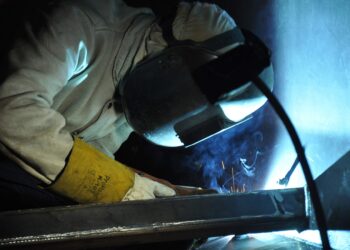The renaissance of traditional music in Central and Eastern Europe (CEE) is a vibrant and significant cultural phenomenon, marking a resurgence of interest in folk and ethnic music traditions that had been overshadowed during much of the 20th century. This revival is not just a nostalgic look back at the past but a dynamic and creative engagement with the region’s rich musical heritage, infusing it with contemporary relevance and appeal.
In countries across CEE, from the Baltic states to the Balkans, traditional music, once relegated to the background by the influences of Western pop culture and the homogenising effects of globalisation, is experiencing a revival. This resurgence is evident in music festivals, contemporary recordings, and the incorporation of traditional elements into modern musical genres.
In Poland, groups like Warsaw Village Band and Kapela ze Wsi Warszawa (Kapela from Warsaw Village) are at the forefront of the traditional music revival. They blend folk melodies and rhythms with modern elements, appealing to both younger and older audiences. Their music often features traditional instruments like the hurdy-gurdy, frame drum, and hammered dulcimer, mixed with modern sounds.
The Hungarian folk music scene is thriving, with Budapest as a key hub. The city hosts numerous folk music clubs and festivals, where bands like Muzsikás and Téka Band perform traditional Hungarian music, often based on extensive research and fieldwork in rural areas. These bands play a crucial role in preserving and revitalising traditional Hungarian music styles, such as the verbunkos and czardas.
In the Balkans, traditional music is characterised by its diverse influences, including Ottoman, Slavic, and Mediterranean sounds. Countries like Serbia, Bulgaria, and Romania have rich traditions of folk music that are being reinvigorated by both folk ensembles and contemporary musicians. The music is often rhythmically complex, with asymmetric time signatures and intricate dances.
Romania, in particular, is known for its vibrant folk traditions, including the Doina, a type of improvised and often melancholic folk song. Bands like Taraf de Haïdouks and Fanfare Ciocărlia have gained international acclaim by blending traditional Romanian music with genres like jazz and Balkan beats.
In the Baltic States – Estonia, Latvia, and Lithuania – folk music is deeply intertwined with national identity. Traditional songs and dances, passed down through generations, played a crucial role during the Singing Revolution, which contributed to the Baltic States’ independence from the Soviet Union. Today, folk music festivals, such as the Viljandi Folk Music Festival in Estonia and the Dainų šventė in Lithuania, are major cultural events that celebrate and preserve Baltic folk traditions.
The revival of traditional music in CEE is also facilitated by academic and institutional support. Music conservatories and universities across the region offer programs in folk music studies, where students can learn about traditional music theory, ethnomusicology, and performance practice. Additionally, archives and research centres dedicated to collecting and studying folk music have played a crucial role in preserving this cultural heritage.
This resurgence of traditional music in CEE is more than just a cultural revival; it represents a reassertion of regional identities and a celebration of the diversity within European culture. As this music continues to evolve, blending the old with the new, it enriches the cultural landscape of CEE, providing a link between the past and the present, and a window into the diverse soul of the region.






